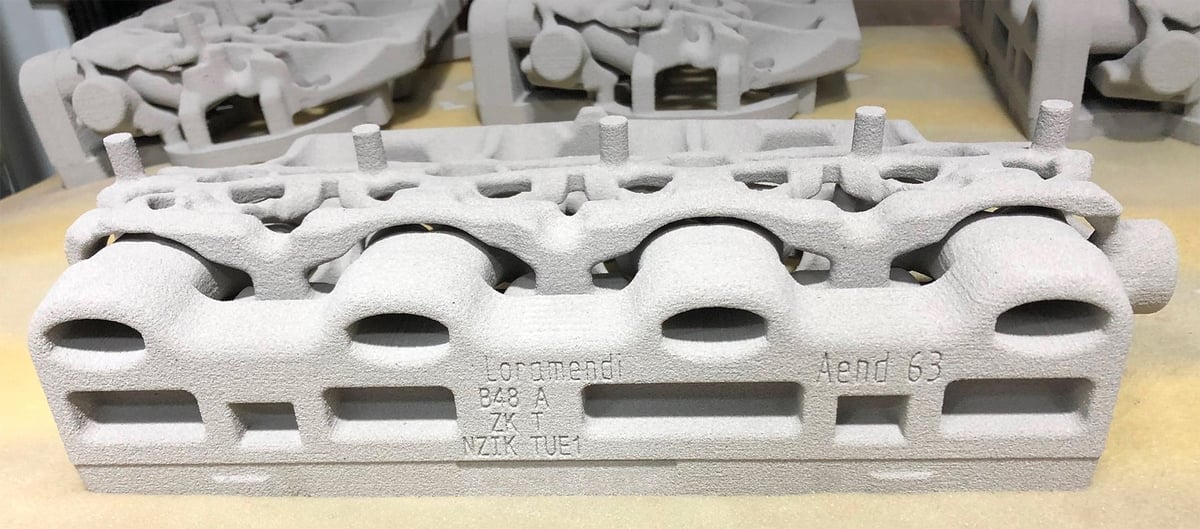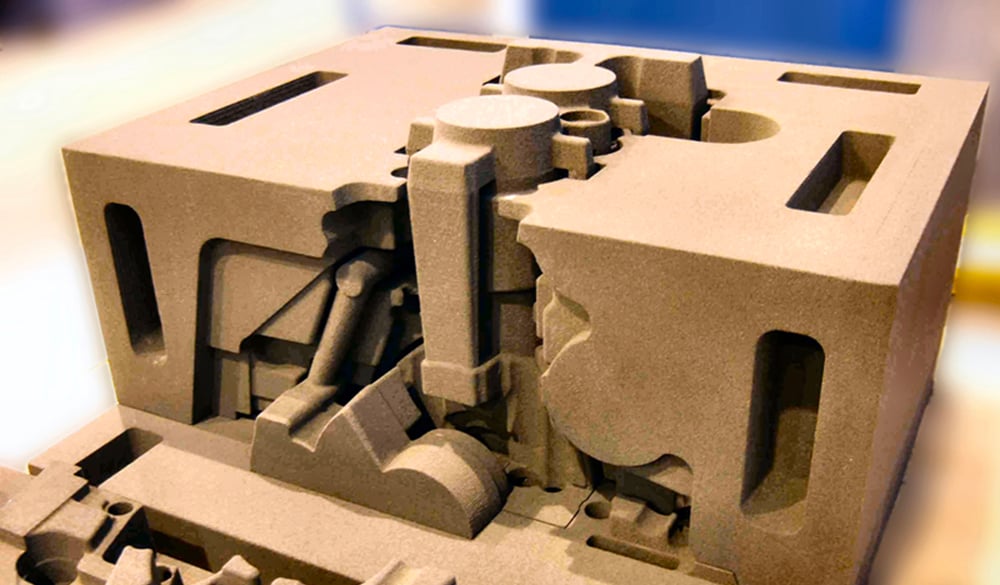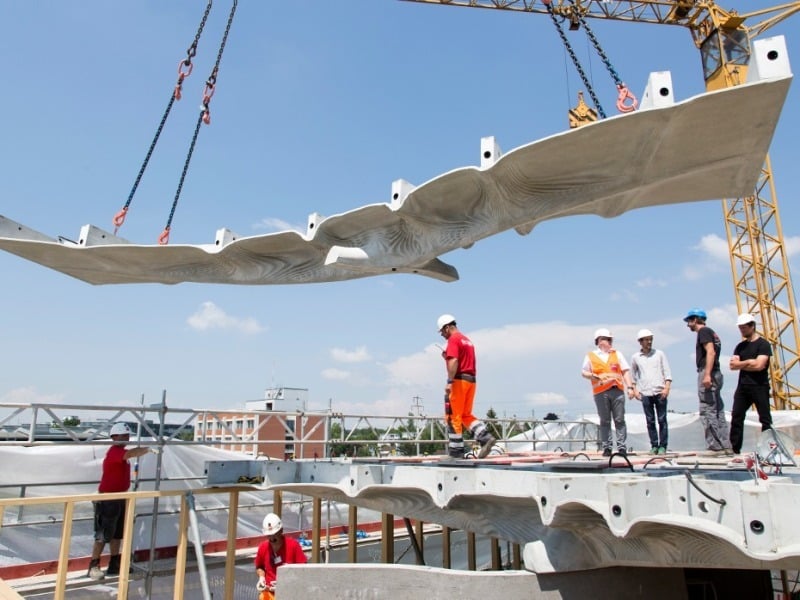The Sand 3D Printing Revolution
With Tesla rumored to be considering 3D printing sand molds to enable casting the underbody frame of its small EV as one piece, sand casting with 3D printers has attracted a lot of attention.
By printing the sand mold or core directly — skipping the pattern-making step entirely — metal casting becomes far faster and cheaper. For prototypes that may completely change and to reduce the risks of design innovation, 3D printing sand molds is a technology rapidly disrupting foundry processes in almost every industry.
What Is Sand 3D Printing?
Sand molds have been used to create metal objects for thousands of years. A pattern is pressed into the sand, which keeps the shape, while molten metal is poured in. Then, after cooling, the sand is removed. It’s a process still used today to cast metal parts used in a wide range of industries, including automotive, aerospace, construction, and general manufacturing. But what if you could skip the pattern-making step entirely and just 3D print the sand mold?
This is the advantage of sand 3D printers.
All 3D sand printing (3DSP) typically uses binder jetting technology. This type of 3D printing process starts with a digital file of the mold that’s then translated into layer-by-layer build instructions for the printer. Various CAD software programs have tools that enable you to generate a digital mold from your digital part file.
Inside the printer, the recoater applies a thin layer of sand on the building platform that’s then selectively bonded by a liquid bonding agent or “glue”. This process is repeated until the mold is built up. Once printed, the mold is removed from the bed of the loose sand and can receive optional surface finishing. Several products are usually produced in a single job box to make the best possible use of the build space.
Molds and cores are capable of being manufactured to an accuracy of ±0.25 mm, enabling sand castings to achieve dimensional standards equivalent to that of lost wax investment castings.
Top Benefits of Sand Printers
- Large parts. The build volume of a sand 3D printer far exceeds any other 3D printing technology.
- Speed. In addition to skipping the pattern step, sand molds can be printed in just days.
- No support structures. Materials not 3D printed with the binder act as support for later layers.
- Little material loss. With no supports needed, no material is wasted, and the leftover material in the print bed can be reused.
- Inexpensive printing material. 3DSP uses the same sands and binder agents as traditional sand mold making, so the technology is easily integrated into traditional foundries.
- Highly accurate. Sand 3D prints can achieve ± 0.25mm accuracy.
Who’s Using 3D Printed Sands Molds and Why?

For General Motors’ relatively low-volume and unique luxury car, the Cadillac Celestiq, the underbody is cast from 51 3D printed sand cores. The novel underbody structure consists of six large precision sand-cast aluminum parts, replacing up to 40 components.
In order to realize the complex structures as economically and lightly as possible, US-based Tooling & Equipment International (TEI) uses 3D sand printing for all inner cores. This allows stiffening features to be incorporated into the hollow sections, which is not economically feasible with conventional manufacturing, the company says. TEI prints these using the Voxeljet VX4000 printers, each of which prints hundreds of inner cores for several vehicle sets in just one night.
Voxeljet recently partnered with BMW to deliver a custom solution for the serial production of 3D printed sand cores used in the production of the BMW B48 engine. Instead of the previous nine complex individual parts, BMW can now produce the core entirely in one piece using 3D printing. This way, the efficiency and consumption of the engine can be optimized due to the complex design of the sand core component, the company says. “No other technology made it possible to mass-produce such a complex element in a cost-efficient manner.”

Legacy Part Recreation
When the US Navy was looking for the most efficient way to produce large metal parts, such as gearbox housings, for legacy aircraft, it turned to 3D sand printing because the hard tooling didn’t exist anymore, and time estimates to recreate it was years. Sand molds took only months. Plus, because metal casting is how the original part was manufactured, there was no airworthiness testing required.
The Navy, for this part program, opted not to directly 3D print the legacy parts in metal because they would be subject to lengthy airworthiness testing before they would be allowed to fly.
There’s virtually no limit to the legacy, historic, or unique metal parts that require remanufacturing. OK Foundry, in Richmond, Virginia, focuses on casting specialty metal parts ranging from turn-of-the-century engine blocks to antique elevator parts, using 3D printed sand molds. The company uses Solidworks CAD software to design 3D printed sand molds and has been designing and pouring 3D printed sand molds since 2012.

Rapid Part Manufacturing
Speed is one of the primary benefits of 3D printing sand molds. One example is a broken-down icebreaker in Canada that was used to keep critical shipping lines open. Due to an engine defect, the icebreaker was stuck near the coast of Canada. The usual delivery time for the required component was around five months which meant considerable financial problems for dozens of companies. Thus, a fast availability of a spare part was the top priority for the repair of the ship. With a 2D design plan of the part, Finish foundry Hetitec Oy, transformed it into a 3D-CAD file. The actual production started with 3D printing the sand molds on Monday, and by Friday of the same week, the machined, finished casting was already on its way to Canada.
Sand 3D Printing of Concrete Forms
An exciting new application for sand 3D printing is to print complex shapes for architectural design. Researchers at ETH Zurich have been researching how to use a sand 3D printer to create molds for concrete.
Concrete can make up as much as 80% of commercial structures today. With this much material demand architects and engineers are constantly looking for a way to reduce material consumption while maintaining the strength. This is not an easy task with conventional flat concrete forms, but by 3D printing forms on a sand 3D printer, the concrete can be sculpted to just the right shape and thickness.
With a sand 3D printer the architect is free to design the shapes and artistic elements that enhance the design. 3D printing concrete forms opens new doors in designing structures with new shapes, sizes, and features that are impossible to achieve with other construction methods.
Voxeljet
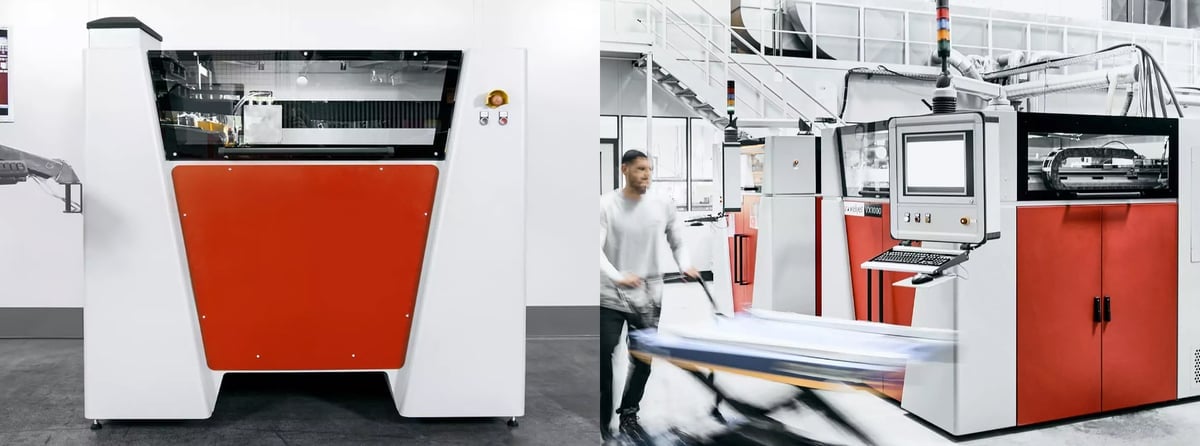
Voxeljet offers one of world’s largest and most powerful 3D sand printing machines for large components or large batches of small components. The company offers sand 3D printers in four sizes using binder jet 3D printing technology.
Voxeljet uses common foundry materials, including sand and binders to ensure a seamless integration into traditional production processes.
Kocel

Kocel produces dozens of sand 3D printer configurations providing a wide range of sizes and features.
Kocel sand printers are made in China but available worldwide. They feature one-click printing and a range of sand materials, as well as environmental considerations including air filtration, air conditioning, low noise, and dust-free.
ExOne, a Desktop Metal Company
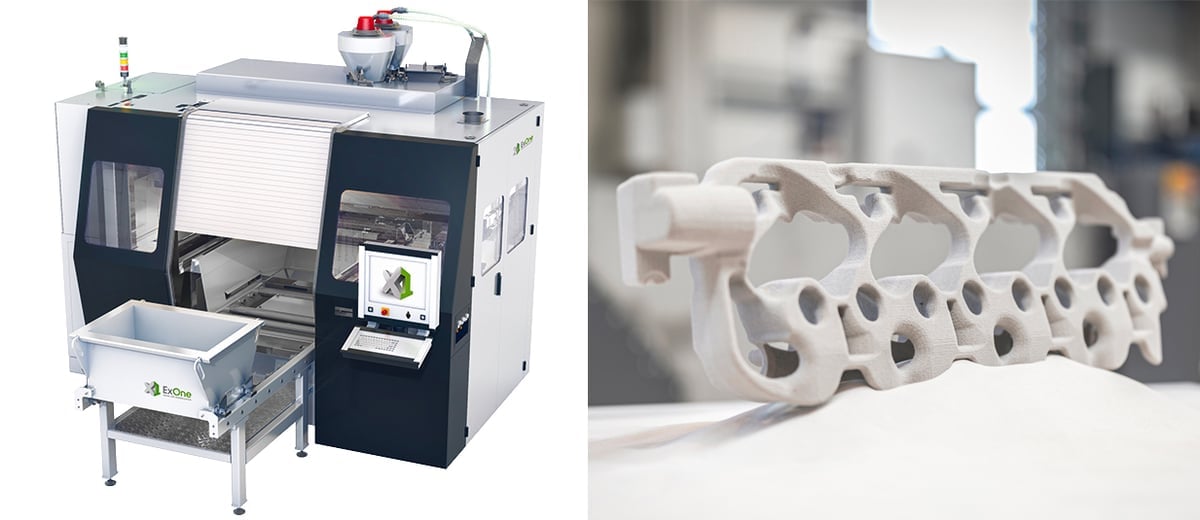
Sand 3D printers from ExOne, a Desktop Metal bBrand, support sand casting applications across industries for prototyping, serial production, and parts on demand. The systems have a fine layer height of just 200 microns and can print with natural and synthetic sands. Nearly 30% of the sand from one job can be reclaimed for use in the next print.
Like the Voxeljet printers, ExOne systems use binder jet technology.
Eplus3D

The EP-C7250 from Eplus3D uses what the company calls “resin sand” to print sand molds for metal casting of parts such as engine blocks, cylinder heads, turbines, and impellers with complex structures.
The EP-C7250 is not a binder jet 3D printer, but instead, it uses selective laser sintering (SLS). It offers a huge build size and can rapidly print sand casts and molds from polystyrene, powdered wax, or resin sand to create molds for the traditional casting process. The EP-C7250 can print layers with a minimum thickness of 80 microns which can be adjusted based on a certain application.
The printer can be used with an optional powder cleaning station, sand blaster, powder mixer, forklift truck, and vacuum cleaner.
CMET
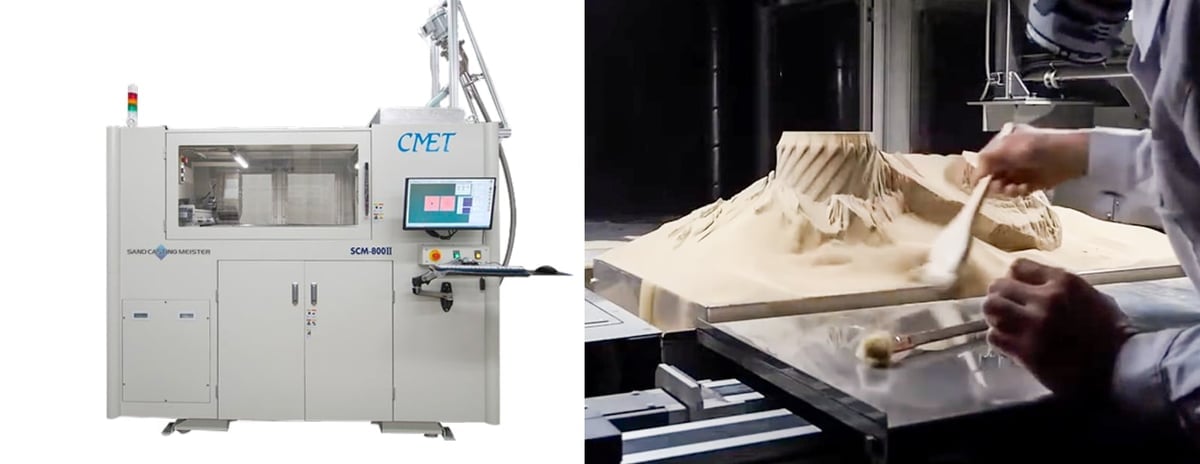
CMET is a Japan-based company that offers two sand 3D printers using binder jet technology. The company claims its units are the fastest. The system uses a dry artificial sand (G-CCS), and uncured sand can be recycled repeatedly. There’s also a room-temperature curing process, eliminating the heat treatment, so molds and cores can be used for the casting process immediately after sand removal.
CMET also offers a sand mold 3D printing service.
License: The text of "The Best Sand 3D Printers for Molds & Cores" by All3DP Pro is licensed under a Creative Commons Attribution 4.0 International License.
